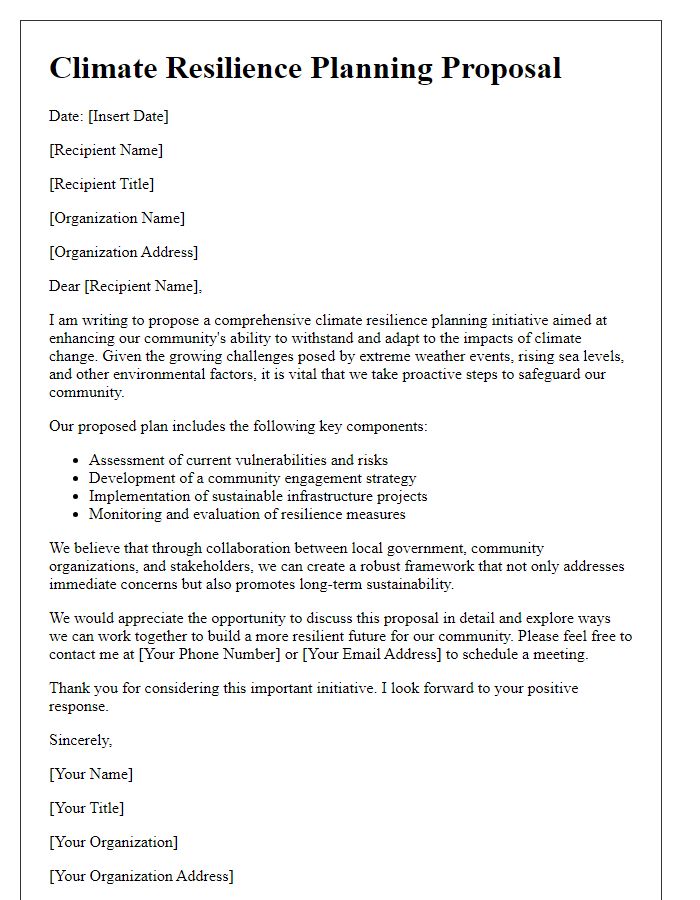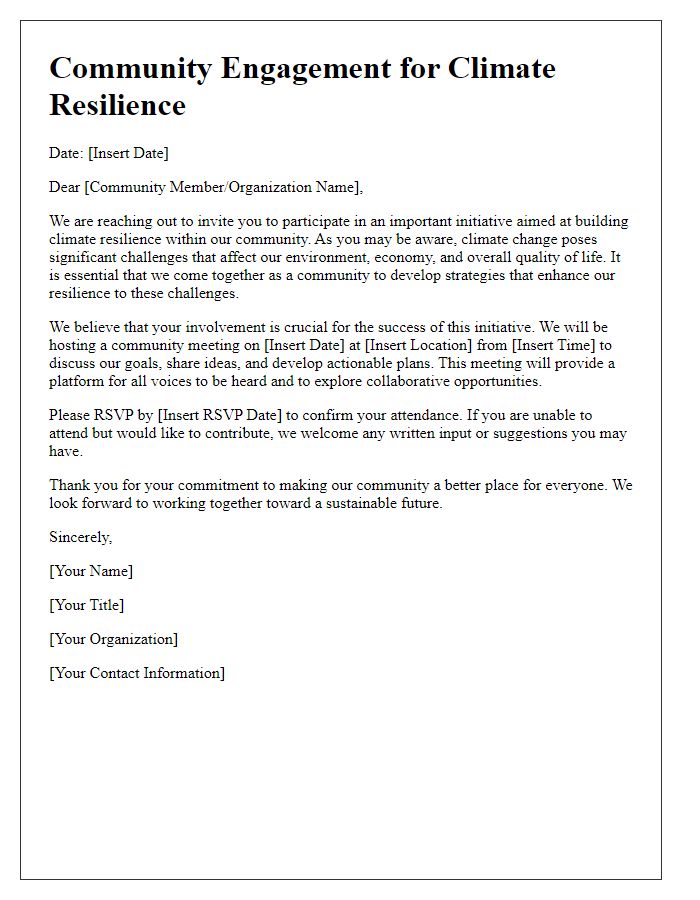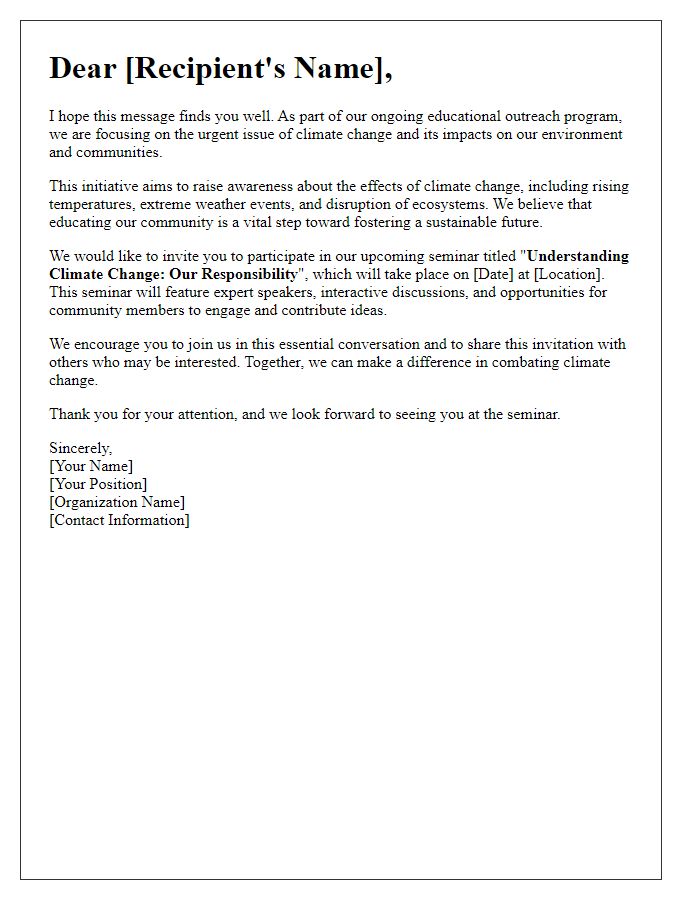Are you ready to dive into the pressing issue of climate change and explore effective strategies for adaptation? In this article, we'll discuss how communities can develop comprehensive climate change adaptation strategies that not only mitigate risks but also create sustainable opportunities for growth and resilience. From enhancing infrastructure to fostering community engagement, there's a wealth of approaches to consider. Let's unravel these innovative solutions together, and I invite you to read more about how we can pave the way for a brighter, more sustainable future.

Clear Objective Statement
Climate change adaptation strategies aim to enhance resilience against the impacts of climate variations, focusing on vulnerable regions like coastal cities facing rising sea levels and extreme weather events. Clear objectives include implementing sustainable agricultural practices to increase food security, protecting natural habitats to preserve biodiversity, and improving infrastructure durability to withstand flooding and hurricanes, particularly in areas such as New Orleans or Miami. Stakeholder engagement involves local communities, government agencies, and non-profit organizations to collaboratively develop action plans that prioritize urgent needs and incorporate scientific research, ensuring comprehensive and effective responses to climate challenges. Further, monitoring and evaluation frameworks are established to assess progress and adjust strategies based on real-time data and observed outcomes, maintaining alignment with global initiatives such as the Paris Agreement.
Comprehensive Risk Assessment
Comprehensive Risk Assessment for climate change adaptation strategies evaluates vulnerabilities of various sectors, such as agriculture, infrastructure, and public health, specifically in regions like the coastal zones of Florida and the arid areas of California. Factors including rising sea levels (predicted to reach 1.5 meters by 2100), extreme temperature fluctuations (with heatwaves surpassing 40 degrees Celsius), and increased frequency of hurricanes (historically averaging 12 named storms per season) are crucial to understanding overall risk. Data gathered from the National Oceanic and Atmospheric Administration (NOAA) and local environmental agencies provide insights into potential impacts on ecosystems and communities. Assessing adaptive capacity involves analyzing economic resilience, availability of climate-smart technologies, and engagement with local stakeholders in cities such as Miami and Los Angeles. This strategy guides resource allocation, policy formulation, and community awareness programs aimed at building resilience against climate-related threats.
Collaboration and Stakeholder Engagement
Climate change adaptation strategies require a comprehensive approach involving various collaborations and stakeholder engagement to ensure community resilience and sustainability. Effective partnerships among local governments, environmental organizations, and community groups facilitate the sharing of resources and knowledge. Regular workshops and meetings, such as the annual Climate Adaptation Conference in San Francisco, bring together over 500 stakeholders, creating synergy and fostering innovative solutions. Public surveys and feedback mechanisms enable residents of vulnerable areas, like coastal cities facing rising sea levels, to voice their concerns and ideas. Integration of Indigenous knowledge, particularly from tribes such as the Coastal Miwok in California, enriches adaptive strategies, ensuring culturally appropriate and ecologically sound practices. Empowering youth through educational initiatives cultivates future leaders equipped to tackle climate challenges within their communities.
Resource Allocation and Budgeting
Effective resource allocation and strategic budgeting are crucial elements in the implementation of climate change adaptation strategies. In 2023, global climate initiatives, such as the Paris Agreement, emphasize the need for substantial investment in sustainable infrastructure and resilience projects. For example, funding of approximately $80 billion is necessary to strengthen coastal defenses against rising sea levels in vulnerable regions like the Maldives. Allocating resources towards innovative technologies, such as solar energy systems, can also lead to significant long-term savings while reducing carbon footprints; costs for solar installations have decreased by nearly 90% since 2009. Moreover, targeted funding for community education programs (estimated at $5 million per project) in climate resilience can empower local populations, enhancing adaptive capacity. Effective budgeting ensures that financial resources are directed towards high-impact initiatives, creating a robust framework to address the multifaceted challenges of climate change.
Monitoring and Evaluation Plan
A comprehensive Monitoring and Evaluation Plan for climate change adaptation strategies focuses on assessing the effectiveness of actions taken across various sectors, such as agriculture, forestry, and infrastructure. Key indicators, such as adaptation resilience scores, crop yield changes (quantified in metric tons), and carbon sequestration rates, are essential for measuring progress. Regular monitoring activities, planned on a quarterly basis, involve data collection from diverse sources, including satellite imagery and local weather stations, across affected regions worldwide. The evaluation phase, occurring annually, emphasizes stakeholder involvement through community workshops in designated areas, enabling local voices to contribute to understanding adaptation challenges and successes. This structured approach ensures that adjustments can be made based on real-time data, facilitating long-term sustainability and resilience against climate impacts.













Comments